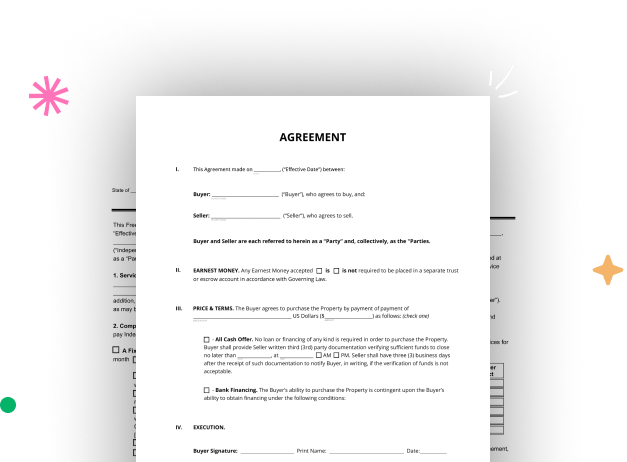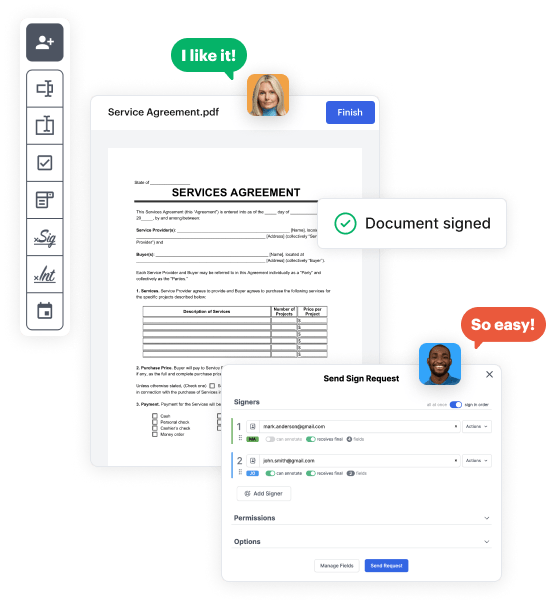

First, log in to your DocHub account. If you don't have one, you can simply register for free.
Once you’re in, access your dashboard. This is your central hub for all document-related activities.
In your dashboard, hit New Document in the upper left corner. Pick Create Blank Document to create the South Dakota Tenant Law from the ground up.
Place numerous fields like text boxes, photos, signature fields, and other options to your form and assign these fields to intended users as required.
Customize your form by including guidelines or any other essential details leveraging the text tool.
Carefully examine your created South Dakota Tenant Law for any errors or necessary adjustments. Make use of DocHub's editing tools to enhance your template.
After completing, save your work. You may select to keep it within DocHub, transfer it to various storage options, or send it via a link or email.